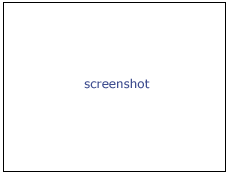Difference between revisions of "GtractTensor"
(Created page with '__NOTOC__ ===Tensor Estimation=== Tensor Estimation {| |thumb|280px|User Interface |thumb|280px|Output |[[…') |
m (Text replacement - "https?:\/\/(?:www|wiki)\.slicer\.org\/slicerWiki\/index\.php\/([^ ]+) " to "https://www.slicer.org/wiki/$1 ") |
||
| Line 40: | Line 40: | ||
|- | |- | ||
| − | |Program documentation-url || | + | |Program documentation-url || https://www.slicer.org/wiki/Modules:GTRACT |- |
| − | |||
| − | |- | ||
|} | |} | ||
Latest revision as of 13:16, 27 November 2019
Home < GtractTensorTensor Estimation
Tensor Estimation
General Information
Module Type & Category
Type: CLI
Category: Diffusion.GTRACT
Authors, Collaborators & Contact
Author: This tool was developed by Vincent Magnotta and Greg Harris.
Contributors:
Contact: name, email
Module Description
| Program title | Tensor Estimation |
| Program description | This step will convert a b-value averaged diffusion tensor image to a 3x3 tensor voxel image. This step takes the diffusion tensor image data and generates a tensor representation of the data based on the signal intensity decay, b values applied, and the diffusion difrections. The apparent diffusion coefficient for a given orientation is computed on a pixel-by-pixel basis by fitting the image data (voxel intensities) to the Stejskal-Tanner equation. If at least 6 diffusion directions are used, then the diffusion tensor can be computed. This program uses itk::DiffusionTensor3DReconstructionImageFilter. The user can adjust background threshold, median filter, and isotropic resampling. |
| Program version | 4.0.0 |
| Program documentation-url | - |
Usage
Use Cases, Examples
This module is especially appropriate for these use cases:
- Use Case 1:
- Use Case 2:
Examples of the module in use:
- Example 1:
- Example 2:
Tutorials
- Tutorial 1
- Data Set 1
Quick Tour of Features and Use
A list panels in the interface, their features, what they mean, and how to use them.
|
Development
Notes from the Developer(s)
Algorithms used, library classes depended upon, use cases, etc.
Dependencies
Other modules or packages that are required for this module's use.
Tests
On the Dashboard, these tests verify that the module is working on various platforms:
- MyModuleTest1 MyModuleTest1.cxx
- MyModuleTest2 MyModuleTest2.cxx
Known bugs
Links to known bugs in the Slicer3 bug tracker
Usability issues
Follow this link to the Slicer3 bug tracker. Please select the usability issue category when browsing or contributing.
Source code & documentation
Links to the module's source code:
Source code:
Doxygen documentation:
More Information
Acknowledgment
Funding for this version of the GTRACT program was provided by NIH/NINDS R01NS050568-01A2S1
References
Publications related to this module go here. Links to pdfs would be useful.

